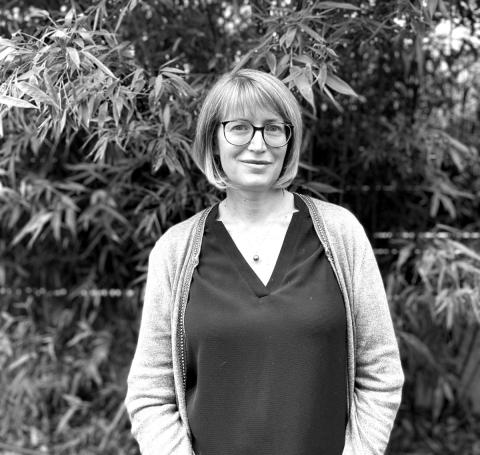Ressources dossier
Climate change and risksScience-led risk management
Published on 02 February 2023
Given climate change and urban expansion, how can we make sure our procedures for the assessment and prevention of avalanche risk are kept up to date?

Véronique Lehideux: Natural risk management in France starts with regional plans known as Regional Plans for the Prevention of Natural Risks (PPRN). These are designed to ensure that hazards are taken into account in urban planning, protecting communities from development that would increase the vulnerability of high-risk zones and reducing risk elsewhere by setting out the precautionary measures to be adopted in other zones. They are based on the worst known event or on a reference that is specific to the hazard – an avalanche or flood with a hundred-year return period, for example. For avalanches, a three-hundred-year return reference value has been added to the mapping so we can identify hazard zones for more exceptional events (yellow zones). As we discover more about the effects of climate change on hazards, we may have to adjust our reference thresholds – this has already been done, for instance, for coastal flood risk. For such changes to be approved, the impact must also be very well documented. In the case of avalanches, we have to consider a further parameter that is subject to change – the nature of the snow itself. The water content of snow is rising. To better understand how this affects the behaviour of the snow, the DGPR has been commissioning studies and modelling for wet avalanches from INRAE for some years. For risks in mountain areas, the Ministry established a programme on glacial and periglacial risks with assistance from INRAE. Now run by the ONF, the programme continues to benefit from very substantial input by INRAE.
What is the goal of this work on glacial risks?
Cross-border dialogue is very important in maintaining a certain level of harmonisation and in meeting the expectations of local elected representatives.
Véronique Lehideux: In terms of outcomes, we have asked this glacial hazard risk programme to provide foresight on new risks such as the melting of snow cover that was previously permanent and glacier collapse. INRAE supplies scientific support concerning the second of these, working with the French Institute of Geosciences and the Environment (IGE) to monitor and anticipate future developments in the increasingly temperate Taconnaz glacier. Laboratories (IGE, Isterre) from the Grenoble Observatoire des Sciences de l’Univers are helping the local Prefecture and the Municipality of Saint-Gervais by studying the water pockets discovered in the Tête-Rousse glacier. Back in 1986, INRAE was also involved in draining the Arsine glacier lake. In both cases, we see public research put to practical use, both for diagnostic purposes and to provide solutions that lie beyond the field of operation of private consultants. The DGPR provides support for the scientific investigation of these sorts of hydrological threats and their characterisation.
How do you take local economic and social factors into account in your work on the prevention of natural risks?
Véronique Lehideux: The prevention of natural risks takes, as its primary goals, the conservation of human life and the reduction of damage. Priority is given to zones where both hazards and social and economic impacts are strongly indicated, and our response in these zones is proportional to the risk. By introducing a moratorium on development in the zones most exposed to certain natural hazards, we can help to preserve their economic and social fabric, and ensure that the national compensation system, known as “Catnat”, remains sustainable. The prevention of natural risks is given its full weight in decisions on sustainable development and adaptation to climate change. The degree of legitimate feeling aroused when disasters are triggered by natural events is a reminder that we are acting responsibly when we take the decision not to build in zones with high exposure to natural hazards.
Internationally, how does France manage its research, expertise and support for public policies on avalanche risk?
Véronique Lehideux: France is a member of the Alpine Convention and served as its President in 2019 and 2020. We have also been the Chair of the EU strategy for the Alpine Region (EUSALP) since 2020, agreeing to stay on for a further year in light of the health emergency. These two roles enable us to connect researchers, academics, businesses, managers and policymakers throughout the alpine countries. Our participation in working groups gives us the chance to share and develop knowledge and good practices, while adapting the latter to the individual circumstances of each country in terms of governance and legal frameworks. The European Interreg projects are good examples of this. Cross-border dialogue is very important in maintaining a certain level of harmonisation and in meeting the expectations of local elected representatives.
Can you give an example of work that has been carried out in cooperation with neighbouring countries?
Véronique Lehideux: By pooling our methods, models and practices in joint studies involving Italian, Swiss and French experts, we have been able to establish the extent of the PPR Avalanche red and blue zones for the most sensitive avalanche paths in the Chamonix valley. Likewise, in the Pyrenees, the maximum extents of avalanches in Catalonia and Spain have been mapped using the methodology developed in France by INRAE.
-
Sebastiàn Escalon & ETNA Research Unit
Authors / Translated by Teresa Bridgeman
-
Thierry Caquet, Mohamed Naaïm & Patrick Flammarion
Scientific direction
-
Lou Rihn
Illustrator
